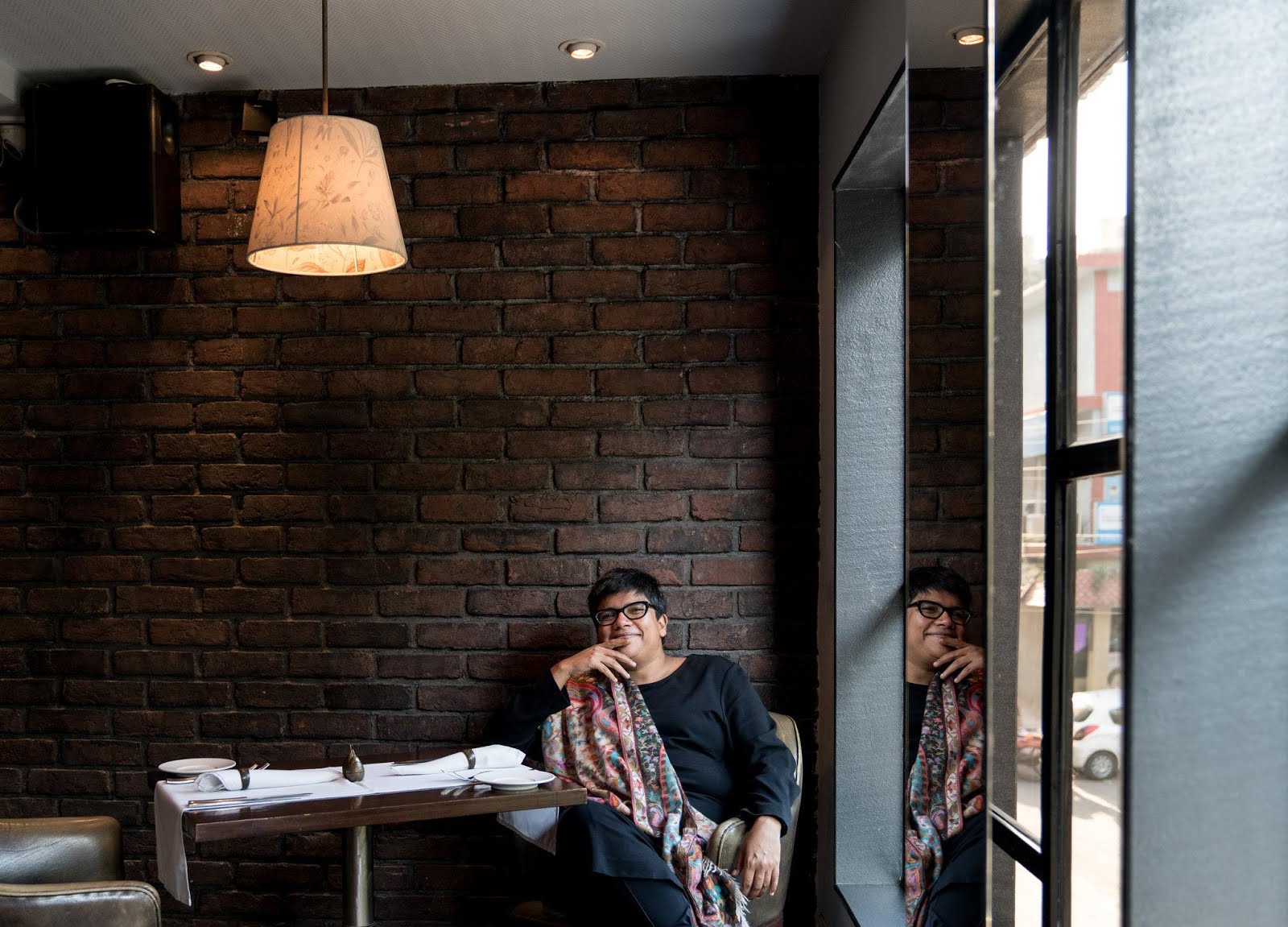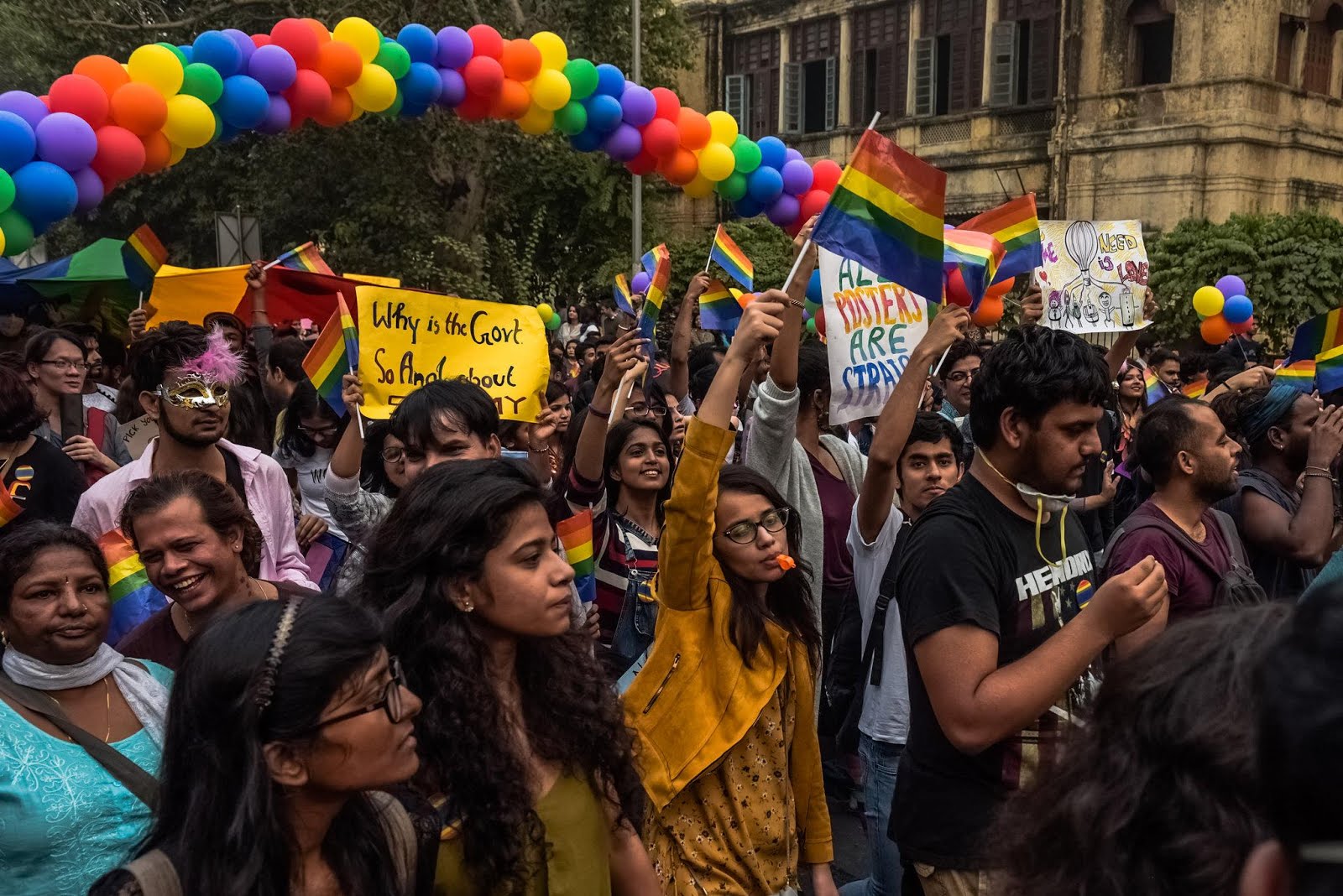Gay in India, where progress has come only with risk
Kai
Schultz, NY Times, June 2, 2018
fight against one of the world’s oldest laws criminalizing gay sex, she would
never have believed you. For most of her life, Ms. Kapur was afraid to ever
speak of her sexuality.
 |
|
Rajesh
Yadav, 25, who identifies as a gay cross-dresser and lives in Bilaspur, in central India, says she has been gang-raped multiple times and beaten with a brick because of her sexuality.CreditAtul Loke for The New York Times
|
BILASPUR,
India — Growing
up in New Delhi during the 1980s, Ms. Kapur knew of no gay women, no reference
points from Bollywood movies that could provide the vocabulary for what she was
feeling. The word “lesbian,” she said, was “like a bad word.”
decades later, Ms. Kapur, who describes herself as deeply private and mostly
apolitical, became a member of the first group of gay petitioners to challenge
the law, known as Section 377.
stepping forward, Ms. Kapur, 43, and other petitioners admitted to the court
that they were criminals under a law routinely used as a cover to harass,
blackmail and sexually assault gay people.
to the law of the land, I can be handcuffed,” she said. “It’s a very real
prospect. Nothing stops the police from coming to the homes of the
petitioners.”
summer, India’s Supreme Court is expected to consider those petitions as it
reviews Section 377’s constitutionality, creating a surge of hope for lawyers and
activists who have been campaigning against the law for years.
is tempered by years of disappointment. Even now, it is an act of calculated
risk to identify publicly as being gay in India, or to advocate for change.
interviews conducted over three months, gay and transgender Indians from across
the country described the cost of living in a country that has forced them to
be outlaws: shunning by parents, social isolation, few protections in the
workplace, and a frightening vulnerability to both police abuse and sexual
assault with limited legal recourse.
 |
| Ayesha Kapur, a businesswoman in Delhi, is one of the petitioners challenging Section 377 in court. “According to the law of the land, I can be handcuffed,” she said. “It’s a very real prospect.”CreditVivek Singh for The New York Times |
Ms.
Kapur, who works in the food and beverages industry, said she came forward
because she had finally had enough of all that.
we invisible?” she asked. “Because we have made ourselves invisible? Or have we
been made invisible? I don’t want to be seen as a criminal. That is what this
is about.”
Bilaspur, a sun-cracked city in central India, Rajesh Yadav, slim with sharp
cheek bones, said she had been gang-raped four times in less than one year,
beaten with a brick and nearly thrown out of a moving vehicle because of her
sexuality.
beg them to leave me every time, but they would beat me and use violence
against me and then rape me,” said Ms. Yadav, 25, who identifies as a gay
cross-dresser and prefers female pronouns. “If I start telling you my story,
several nights would pass.”
young gay man who asked to be identified only by his first initial, shared a
similar account.
22, made plans to meet a man from an instant messaging application in eastern
India, he was greeted instead by two different men, one of them in a police
uniform, who drugged and raped him, he said. Afterward, one of the men took a
selfie with A. “I was afraid he would blackmail me,” he said.
of them considered approaching the police to report the crimes, fearing the
consequences of doing so.
377 is cruel,” A. said. “It is being misused to harm people like me. It makes
people hide.”
when a Bangalore-based doctor did come forward after several men he had sex with extorted about
$25,000 from him, the police arrested the men, but then booked the doctor under
Section 377, said Danish Sheikh,
an assistant professor at Jindal Global Law School in New Delhi.
 |
| Anjali Gopalan, center, who runs the Naz Foundation, an H.I.V.-patient advocacy group, has been fighting Section 377 for years.CreditThe New York Times |
“The
doctor here becomes both victim and perpetrator,” he said. “The law has a
chilling effect on your ability to access justice.”
of blackmail or sexual assault often hesitate to approach police for just that
reason, fearing they will be arrested — or worse. “The rich ones, they will
extort money from; the poor ones, they will use for sexual favors,” said
Mohnish Malhotra, a gay-rights activist in New Delhi.
talks about these experiences,” he added. “This is not a conversation that
people are comfortable with here in India.”
was once at ease with depictions of same-sex love and gender fluidity. In
Hinduism, gods transform into goddesses and men bear children. Rekhti, a genre of poetry
that flourished in India from the late 1700s, describes erotic encounters
between women.
British colonizers arrived in India, that acceptance of homosexuality eroded.
1860s, the British introduced Section 377 of the Indian Penal Code. The law
imposed a fine, 10 years’ imprisonment or a life sentence on “whoever
voluntarily has carnal intercourse against the order of nature.”
is generally applied to sex between men, but it officially extends to anybody
engaged in anal or oral sex.
said there had been a few advances in the years since India won independence in
1947, including when government literature distributed in schools last year recognized same-sex attraction. But homophobia here is still
often expressed with predatory behavior, and Section 377 narrows channels for
recourse.
to strike down Section 377 began in earnest in 2000, when a terrified young man
showed up at the Naz
Foundation, an H.I.V. advocacy organization in New Delhi, pleading
for help.
 |
| Ritu Dalmia, a chef and restaurateur, is one of five petitioners challenging India’s Section 377, one of the world’s oldest laws still in use to criminalize gay sex.CreditVivek Singh for The New York Times |
Anjali
Gopalan, who runs the organization, said the man’s parents had taken him to a
government hospital where he was forced to undergo electroshock therapy to
“make him straight.”
relayed the man’s plight to India’s National
Human Rights Commission, the commission said it could not help the
man because he was gay and therefore a criminal. “I was horrified,” she said.
after, Ms. Gopalan filed a lawsuit challenging Section 377, fending off death
threats until 2009, when a high court in New Delhi ruled that
the law could not be applied to consensual sex. But appeals were
filed by Christian, Muslim and Hindu groups and the law was restored by India’s Supreme Court in 2013.
of gay people who had come out of the closet in 2009 were swiftly pushed back
in. Some wealthier Indians left the country for good.
first time, I thought I needed to move out,” said the chef Ritu Dalmia,
another petitioner challenging Section 377. “There was this fear — absolute
fear.”
judgment, the Supreme Court justified the ruling by writing that only a
“minuscule fraction of the country’s population constitute lesbians, gays,
bisexuals or transgenders.” Since its inception, the court said, less than 200
people had been prosecuted under Section 377.
which tracks police complaints, suggest that many more cases are lodged,
lawyers said. In 2014, the first year the bureau says it started tracking
Section 377 cases, 1,148 complaints were filed. In 2016, the number had nearly
doubled to 2,187. That year, over 1,600 cases were sent for trial.
conclusions from the data is difficult. There is often no way to tell on police
complaints whether sex was consensual. Many complaints are filed by third
parties who make their own judgments, said Professor Sheikh.
 |
|
A
gay-pride march in New Delhi in November.CreditThe New York Times |
“It is
very rarely the survivor who is filing the case,” he said. “The father would
file the case saying that, ‘I caught this other person doing a wrongful act
with my son.’ ”
to the court’s ruling, a team of lawyers led by Menaka Guruswamy and Arundhati
Katju submitted a writ petition in 2016 on behalf of gay Indians. The petition
challenged Section 377 on the basis that it violated their rights to equality
and liberty, among other infractions, under India’s Constitution.
felt that there was a void,” Ms. Guruswamy said, “the absence of L.G.B.T.
individuals saying, ‘This Constitution is mine as well.’”
three other petitioners joined Ms. Kapur and Ms. Dalmia: Navtej Singh Johar, a
dancer; Sunil Mehra, a journalist; and Aman Nath, a hotelier.
last few weeks, emboldened by that group, petitions were filed by 26 others,
including Arif Jafar, whose outreach program for gay and transgender people was
shut down in 2001 by police who said he was accepting funds
from Pakistan to turn Indian men gay.
was booked under Section 377 and other laws and spent 47 days in jail, where he was beaten by inmates.
most of the petitioners are financially independent, protections that insulate
them from the dangers that many gay Indians face, public opinion has slowly
shifted in some places. Pride parades were popping up in cities. Parents were
coming forward to support their gay children.
took her own steps. She left a corporate job where she worked with “superb
people” but felt bothered by co-workers assuming that everyone in the office
was straight. In 2009, she also came out to her mother, who died of lung cancer
shortly after the conversation.
lost my mother, I became a bit fearless,” Ms. Kapur said. “In death, she gave
me courage.”
the Supreme Court excludes consensual sex from the law, lawyers said its
archaic language means a legislative amendment is needed to protect people who
are gay. Still, Ms. Kapur felt hopeful. Messages of support had overwhelmed
negative ones, she said.
Supreme Court referred Section 377 to a larger bench in January, Ms. Kapur’s
father mailed her a framed newspaper clipping of an article from The Times of
India profiling the “Famous & Fearless 5.”
clipping, he scrawled a note: “Your mother would have been so proud.”


